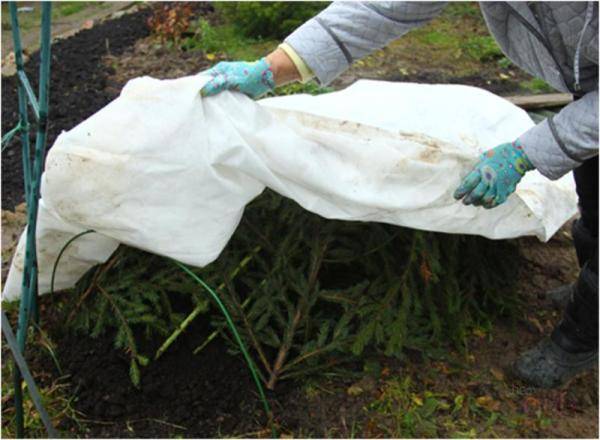Content
Every gardener dreams of beautiful rose bushes growing on his plot. These flowers are quite finicky, so they need special care. But still, even in the harsh conditions of Siberia, you can grow beautiful buds. The main thing is to properly prepare the flowers for wintering. In this article we will take a closer look at how to cover roses in Siberia so that they do not suffer from frost.
Roses and Siberian climate
In warmer regions, roses do not need to be covered. Snow is a natural shelter that will prevent plants from freezing. In this case, the bushes are simply pruned and fed in the fall. In this form, roses can easily withstand even the most severe cold.
In Siberia, where winters are much harsher, you will have to think about building an artificial shelter. In warm regions, too warm a shelter can cause damping off of the bushes. But in Siberia you can’t do without it.
Preparing roses for winter
Preparing roses consists mainly of 2 stages:
- feeding;
- pruning
This must be done on time and correctly. At the beginning of August, it is necessary to stop watering the bushes. Then in October you will need to water the roses deeply so that the water penetrates deep into the soil and nourishes the roses throughout the winter. In order to strengthen the root system and stems, it is necessary to fertilize the plants.For this purpose, potassium and phosphorus fertilizers are used.
Then the bushes are pruned. All leaves and dried branches are removed from them. All damaged and broken shoots are also cut off. The method of pruning largely depends on the variety of roses. For example, standard roses don't cut too much. For the winter, they are carefully laid out on the ground and dug in. Therefore, it is necessary to trim only those branches that bend poorly. So, it will be more convenient to cover the bush.
Climbing roses need to cut off all old and dried branches. If I run for more than three years, then I can safely cut it off. They also remove branches that are too long, which in the future may simply break from strong winds. It is imperative to remove branches from the bushes that are affected by pests and diseases. Then they need to be burned to prevent pathogens from spreading to other plants.
Under natural conditions, the ripening of fruits gives the plant a signal that it is time to enter the dormant phase. This way, the plant will not begin to form young shoots.
Some gardeners believe that pruning only harms plants, since pathogenic microorganisms can easily penetrate through the pruning area. But at the same time, pruning helps the plant withstand severe frosts, and in this case the branches do not suffer in any way.
Sheltering bushes for the winter from pine needles
In Siberian conditions, caring for roses is much more difficult. In order for plants to easily survive the winter, they need to be prepared for this in advance. It must be remembered that only well-groomed and strong bushes are more resistant.To do this, they need to be regularly fed and trimmed throughout the season.
An excellent shelter for bushes can be made from ordinary spruce branches. But it is important to remember that this material is only suitable for those roses whose height after pruning is no more than 50 centimeters. It is necessary to construct such a shelter closer to the onset of frost, since in warm weather the plants can simply rot under a thick layer of branches.
First you need to loosen the soil around the bush. This should be done extremely carefully so as not to damage the root system. The main thing is that the thickness of the loose soil is about 5 centimeters. After this, the bush is treated with a solution of copper sulfate. You can also use Bordeaux mixture. Then the top layer of soil is thoroughly sprinkled with wood ash. This will protect the plant from pests and various fungal diseases.
When the temperature drops to -5 °C at night, the bushes can be covered with peat. Young seedlings are hilled up to the middle of their growth, and taller plants up to 1/3 of the height of the entire bush. In this form, roses are not afraid of even the most severe frosts.
It is important that the soil or peat is dry. So, air will freely penetrate to the plant.
After this, you can begin building the shelter itself. To do this, lay pine or spruce branches on top. Do not fill the gaps with dry leaves, grass or sawdust. Such materials will quickly begin to rot when moisture enters the structure. You can cover roses only in dry, sunny weather.
Construction of a polyethylene greenhouse
Many gardeners are accustomed to covering bushes with polyethylene. This shelter perfectly protects plants from the cold.And with proper ventilation, the bushes will definitely not rot. To build such a shelter you will need the following materials and equipment:
- metal rods or arms;
- roofing felt;
- polyethylene film.
To properly cover roses with polyethylene, you must follow these steps:
- The first step, of course, is to prepare the roses. They are fed, trimmed and tied so that they can be conveniently laid on the ground.
- In this way, you can cover both one bush and entire rows. Metal arches are installed above the roses. You can do this in advance, and then simply throw covering material on top. In addition, you can dig outlets for water to prevent it from flowing inside.
- When frost sets in, the arcs should be covered with roofing felt, and this, in turn, with polyethylene. Such a shelter will prevent moisture from accumulating, which can cause damping off. The edges of the roofing material can be slightly raised to allow fresh air to flow to the flowers.
In addition to roofing felt, you can use regular cardboard or bitumen paper. It is installed on metal arches and then covered with polyethylene. In this case, polyethylene protects the structure from moisture.
Removing the shelter in the spring
As soon as it gets warmer outside, the roses will need to be freed from their shelter. It is important not to do this too early, or, conversely, too late. To prevent excess moisture from accumulating in rose beds in the spring, they should be planted in raised areas. They usually warm up first.
Roses need to be opened gradually so that the bushes get used to sunlight and temperature changes. To do this, first raise the edges of the covering material. Then you need to completely open one side of the structure. After some time, the cover is removed completely.
Spruce or pine branches are removed from bushes immediately after the snow begins to melt. If you do not have time to do this, moisture may seep inside and the plant will begin to rot. At first, it is necessary to shade the bushes until they get used to direct sunlight. For this, 5 to 10 days will be enough.
Immediately after adaptation, you can begin spring pruning of roses. All shoots that have dried over the winter must be removed. Next, you should feed the bushes so that they gain strength before the start of the growing season. Also, do not forget about watering and loosening the soil.
Conclusion
Now you know exactly how to cover roses for the winter in Siberia. As you can see from this article, it is not necessary to use expensive materials for this. Even ordinary pine branches can save plants from frost. The main thing is that this shelter does not prevent the flowers from receiving the necessary amount of fresh air and does not cause the bushes to damp out. Even in winter, it is important to constantly ventilate roses. You also need to adhere to the correct deadlines. If you cover roses too early or too late, they are unlikely to be able to withstand the harsh Siberian frosts.














